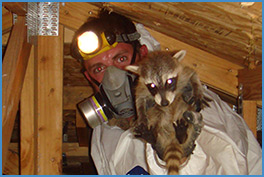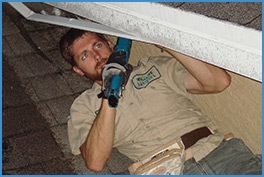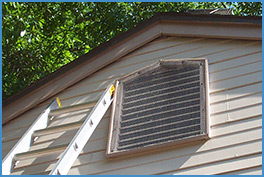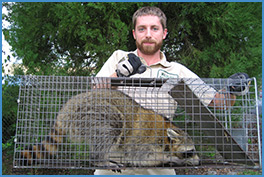Suffolk County Pest Animal Removal: 617-939-9710
Pest Animal of Suffolk County provides nuisance animal removal services in Suffolk County, MA. We humanely solve conflicts between people and the wild animals of Suffolk County Massachusetts, including raccoons, squirrels, rats, snakes, birds, opossums, skunks, and more! We are a full-service nuisance wildlife control company
servicing the greater Suffolk County region. We provide both residential and commercial services, and are fully licensed and insured in Massachusetts. In solving pest animal conflicts, we utilize a full array of services, from humane trapping and relocation, to critter prevention and damage
repairs, to dead animal removal, attic cleanup, and more. We offer competitive pricing and the best service in Suffolk County. Every situation is different, so give us a call at 617-939-9710 now to discuss your wild animal problem, and get a price quote over the phone. We
answer our phones 24-7-365, work on weekends, and can usually schedule a same-day or next-day appointment to solve your pest animal problem!
Suffolk County RACCOON CONTROL: Call us now for raccoon removal in Suffolk County, MA.
Visit the How to get rid of raccoons page to learn how to do it yourself.
To find out our prices for raccoon control, visit our raccoon removal prices page.
Suffolk County SQUIRREL CONTROL: Call us now for squirrel removal in Suffolk County, MA.
Visit the How to get rid of squirrels page to learn how to do it yourself.
To find out our prices for squirrel control, visit our squirrel removal prices page.
Suffolk County SKUNK CONTROL: Call us now for skunk removal in Suffolk County, MA.
Visit the How to get rid of skunks page to learn how to do it yourself.
To find out our prices for skunk control, visit our skunk removal prices page.
Suffolk County RAT CONTROL: Call us now for rat removal in Suffolk County, MA.
Visit the How to get rid of rats page to learn how to do it yourself.
To find out our prices for rat control, visit our rat removal prices page.
Suffolk County MOUSE CONTROL: Call us now for mouse removal in Suffolk County, MA.
Visit the How to get rid of mice page to learn how to do it yourself.
To find out our prices for mouse control, visit our mouse removal prices page.
Suffolk County BAT CONTROL: Call us now for bat removal in Suffolk County, MA.
Visit the How to get rid of bats page to learn how to do it yourself.
To find out our prices for bat control, visit our bat removal prices page.
Suffolk County SNAKE CONTROL: Call us now for snake removal in Suffolk County, MA.
Visit the How to get rid of snakes page to learn how to do it yourself.
To find out our prices for snake control, visit our snake removal prices page.
Suffolk County BIRD CONTROL: Call us now for bird removal in Suffolk County, MA.
Visit the How to get rid of birds page to learn how to do it yourself.
To find out our prices for bird control, visit our bird removal prices page.
Suffolk County WILDLIFE CONTROL: Call us now for wildlife removal in Suffolk County, MA.
We handle all wildlife, such as opossums, groundhogs, armadillos, moles, fox, coyote, and more.
To find out our prices for wildlife control, visit our wildlife removal prices page.
Other Resources for FREE Sity Animal Removal:
Suffolk County Animal Services: (617) 349-4376
New England Wildlife Center Wildlife Rehabilitators: (781) 682-4878 https://www.newildlife.org/
Massachusetts Wildlife Commission: 508-389-6317 https://www.mass.gov/orgs/department-of-fish-and-game
Suffolk County Police Department: (617) 343-4240
Suffolk County Wildlife Tip: How to Get Rid of Groundhogs: Fencing off potential den locations and sources of food canencourage the animals to seek greener pastures. The fence should be built of wire mesh with openings about an inch wide and supported by posts. IT should be placed in a trench dug at least a foot deep around the area to be enclosed. About a foot of the mesh at the bottom should be bent outward at a 90 degree angle, pointed away from the protected space and buried to discourage the animals from tunneling under it. And since groundhogs are adept leapers, the exposed part of the fence should be three- to four feet high if around gardens, and it can be stapled in place if set around a building foundation or porch.













